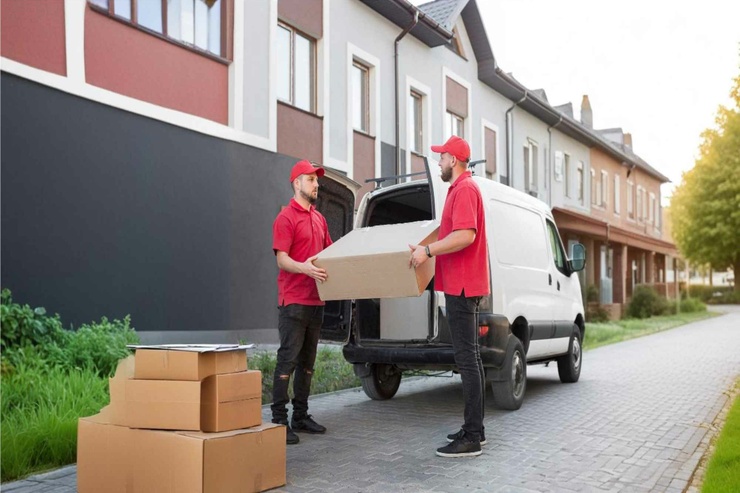- Route Optimization
- Sustainability
- Route
Plan sustainable delivery routes to meet sustainability goals
If 2020 taught us anything, it was that sustainability is not just a trend, a fad, or a blip on the map. It’s a serious topic that’s here to stay. In fact, global CO2 emissions fell by 6.4% in 2020 due to COVID-19 crushing international economic and social activities.
For the past 20 years, society has defined the what and the why of sustainability, but just recently, we shifted our focus to the how. Everyone from business owners to consumers is being forced to ask the tough question of “How do we start to clean up the mess we created?” One avenue to focus on is understanding how we get all that stuff we order online - in a sustainable way.
The Good, The Bad, And The Ugly of Last-Mile Delivery
Last-mile delivery is here to stay, and with it, its emissions. In 2019, U.S. greenhouse gas emissions totaled 6,558 million metric tons. According to Inside Logistics, urban last-mile delivery emissions are on track to increase by over 30% by 2030 in the top 100 cities globally. As a result of commercial, industrial, and household use, fluorinated gases (HFCs) emissions are released. Cars and other vehicles use mobile air-conditioners, which are the systems that are responsible for the most significant amount of HFC emissions. 80% of passenger cars and commercial vehicles account for the majority of these installed devices, and according to the German Federal Environment Agency, the annual emission rate of a MAC system is approximately 8%. Commercial vehicles are contributing to fluorinated gases. With more trucks on the road to meet consumers’ demand and online ordering, we are seeing more environmental toxic emissions produced.
Without intervention, these emissions could continue to rise and reach 25 million tons of CO2 emitted annually by 2030. The World Economic Forum suggests that growing demand for e-commerce delivery will result in 36% more delivery vehicles in inner cities by 2030. The increase in vehicles will lead to a rise in both emissions and traffic congestion.
Consumers are Driving Sustainability
According to IBM’s 2020 report, nearly 60% of consumers reported they were willing to change their shopping habits to reduce environmental impact. In addition, more than 70% said they would pay a premium for sustainable and environmentally responsible brands. So, if sales are up and consumers are redefining where they get their stuff from, how can they be sure they’re getting those things in a sustainable way? Last-mile delivery is the hot topic du jour for the logistics industry. And, figuring out how to optimize last-mile routing is even more desirable. In the time it took me to write this blog, I saw a total of three delivery trucks drive up and down my street - two from the same company and the other multiple times. Why am I seeing two trucks from the same company? Or, why can’t that one delivery driver get it right the first time?
What are empty miles and their impact on the environment?
With more trucks on the road to meet the consumer’s demand, we start to see an increase in empty miles and the possible negative impact on our environment. Empty miles, or dead-head miles, are a significant concern for the logistics industry these days. In fact, the share of total miles that truckers drive empty has been consistently stuck around 35% since at least the late 1990s. According to the EPA, a typical passenger vehicle emits about 4.6 metric tons of CO2 per year. And, every gallon of gasoline burned creates about 8,887 grams of CO2.
How Optimized Routing Can Help You To Be Sustainable
One way to combat empty miles is with machine learning technology in the form of route optimization software. This software leads to an increase in driver and carrier utilization and a decrease in empty miles. Route optimization also helps to drive greater efficiencies like fuel utilization and faster deliveries. By utilizing route optimization, a leading international courier, package delivery, and express mail service enable their couriers to plan their routes more effectively, thus improving productivity and fuel efficiency.
FarEye is Here to Help with Your Sustainability Goals
Regardless of where you are in executing your sustainability goals, FarEye is committed to providing you with a sustainable route optimization solution. By leveraging technology like our Intelligent Delivery Management Platform, our proprietary routing algorithms help you utilize the total capacity of your delivery fleet while reducing empty miles.
To start the journey of creating sustainable, optimized routes for your customers, head on over to our carbon calculator to find out how much CO2 you could save in your last-mile deliveries this holiday season.

Komal Puri is a seasoned professional in the logistics and supply chain industry. As the AVP of Marketing and a subject matter expert at FarEye, she has been instrumental in shaping the industry narrative for the past decade. Her expertise and insights have earned her numerous awards and recognition. Komal’s writings reflect her deep understanding of the industry, offering valuable insights and thought leadership.
Let's Talk to Our Experts and Optimize Your Deliveries Today!
An expert from our team will reach out within 24 hours



